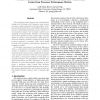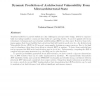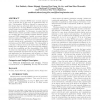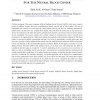5 search results - page 1 / 1 » A first-order mechanistic model for architectural vulnerabil... |
ISCA
2012
IEEE
11 years 11 months ago
2012
IEEE
Soft error reliability has become a first-order design criterion for modern microprocessors. Architectural Vulnerability Factor (AVF) modeling is often used to capture the probab...
HPCA
2009
IEEE
14 years 10 months ago
2009
IEEE
The shrinking processor feature size, lower threshold voltage and increasing clock frequency make modern processors highly vulnerable to transient faults. Architectural Vulnerabil...
ISCA
2007
IEEE
14 years 3 months ago
2007
IEEE
Transient faults due to particle strikes are a key challenge in microprocessor design. Driven by exponentially increasing transistor counts, per-chip faults are a growing burden. ...
MSWIM
2006
ACM
14 years 3 months ago
2006
ACM
Wireless sensor networks (WSNs) have recently attracted a lot of interest due to the range of applications they enable. Unfortunately, WSNs are exposed to numerous security threat...
CORR
2010
Springer
13 years 9 months ago
2010
Springer
Problem statement: This paper examines Artificial Spiking Neural Network (ASNN) which inter-connects group of artificial neurons that uses a mathematical model with the aid of blo...




